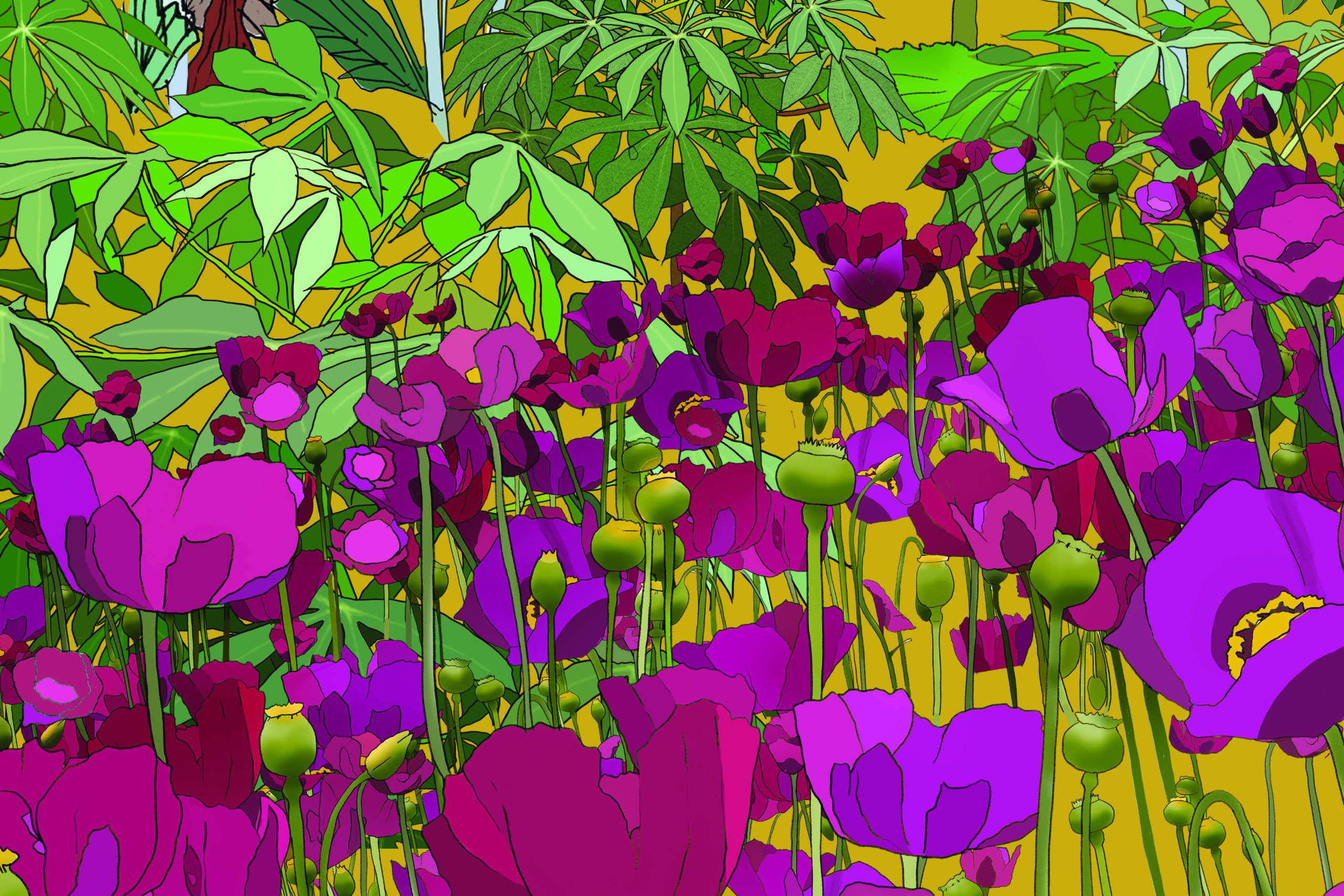LOOKING OUT OF THE WINDOW
Extended text by Feifei Zhou

The excerpt from John Keats’s poem describes a vivid view from his window: the hedge, the river, the primroses, the daisies on the hill… It illustrates a beautifully curated natural landscape.
Natural landscapes have been a significant, sometimes primary source of inspiration for European artists, in which many have attempted to capture its beauty through various forms and methods.
What really interests me is the contemporary understanding of beauty in nature. What makes nature “beautiful”, and what doesn’t? Capitalistic views on “nature” define it as something to be tamed, managed, and profitable. Many are awed by the picturesque landscapes of homogeneous crops (think about the lavender fields), but few see the traces of industrial legacy left behind. In parks, streets and gardens, trees and flowers are arranged and manicured to appear “neat”. The obsession with exotic plants, too, shows a somewhat twisted appreciation towards nature.
Since the first waves of European voyages, humans have been continuously transporting plants and other living beings to new territories. Botanical gardens, public parks and garden centres are filled with plants from all over the world. Many landscapes were overwhelmed by introduced invasive species, pests, and pathogens that arrived through plant trades, and some ecosystems have been so devastated that they may never recover.
When I look out of my window, I see arrays of plants placed close to the windows of the building opposite. Looking at these thoughtfully curated window displays, it’s interesting how each plant, contained in its individual ceramic or metal pot, is fetishized as objects of decoration. Instead of nature, we are looking upon the idealisation of nature.
“Looking out of the window” is a fantastical depiction of a “beautiful” view – an assemblage of various plant species crowding together, each taken from the drawing series of the digital publication Feral Atlas: The More-than-Human Anthropocene. Each plant species participates in a series of historical events of ecological catastrophe caused by humans but went out of human control. To know more about the uncontrollable ecological effects caused by human infrastructures, please go to feralatlas.org.